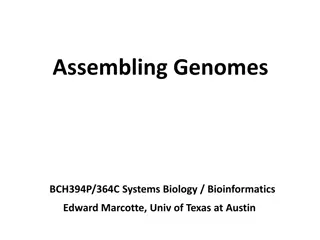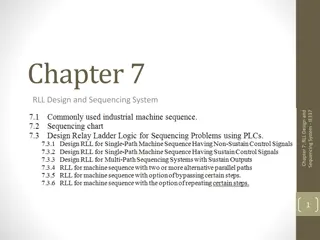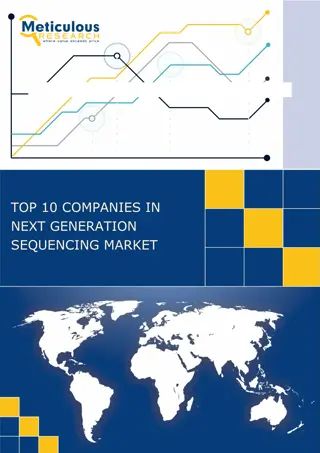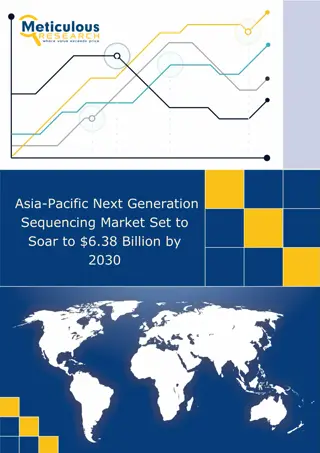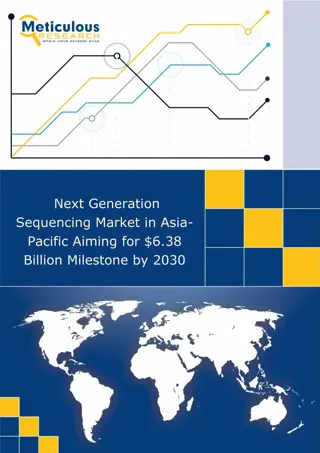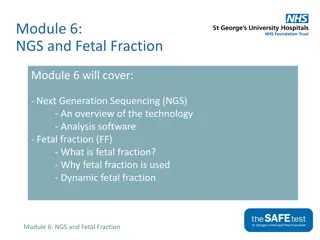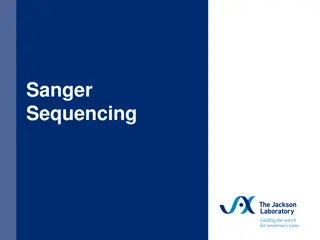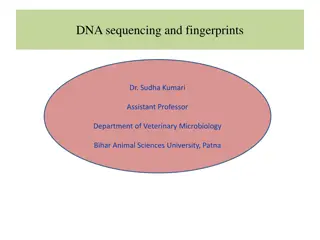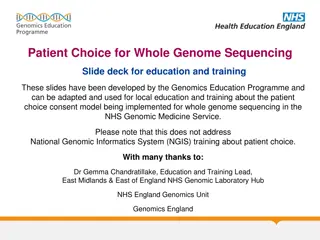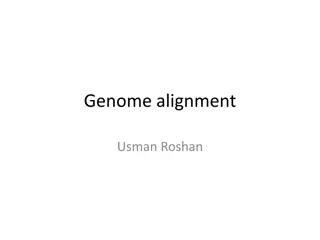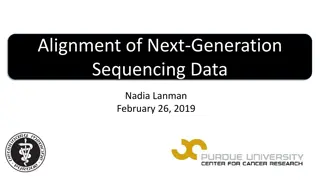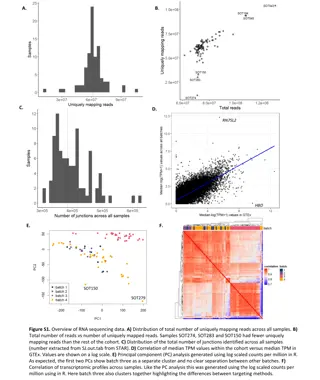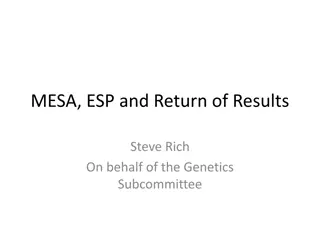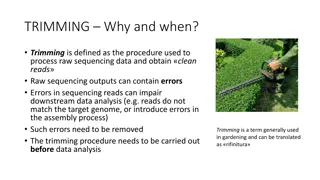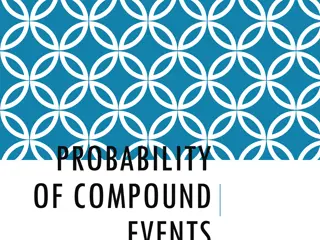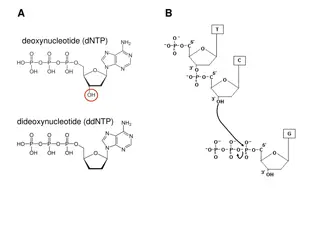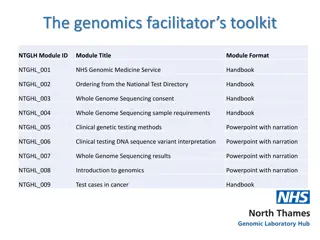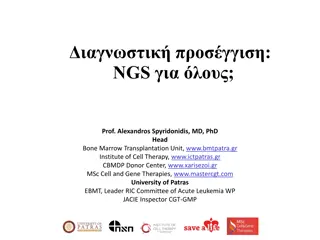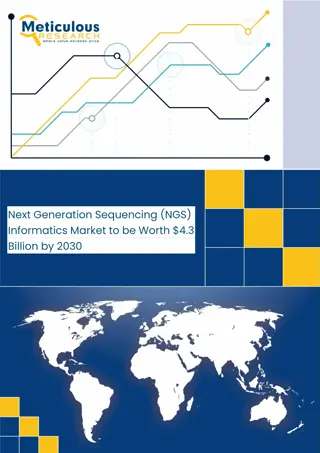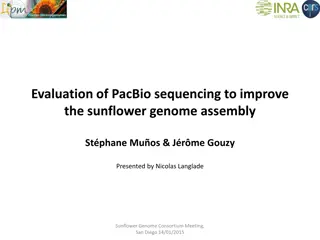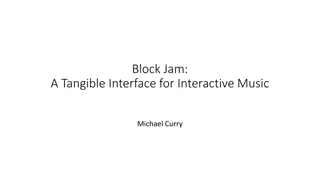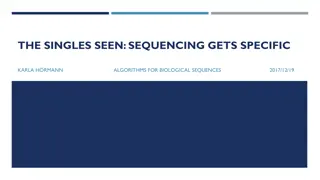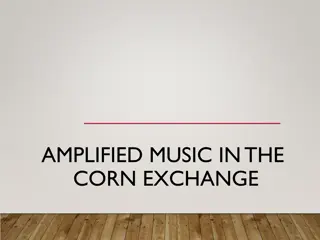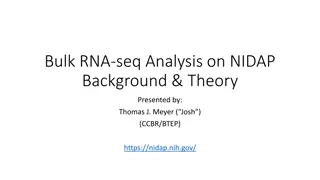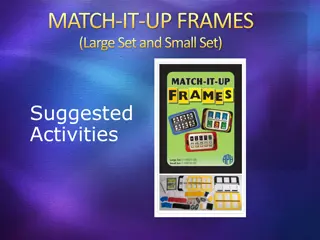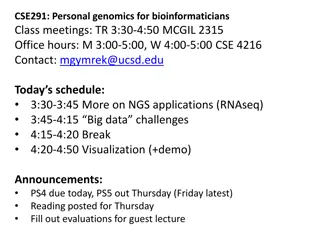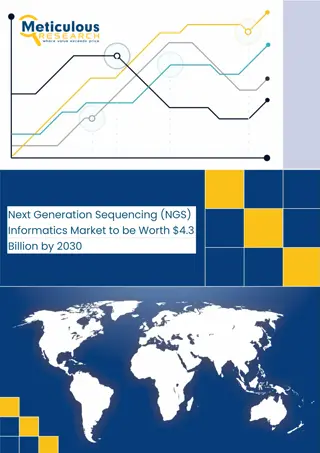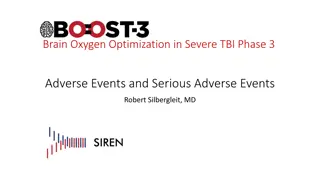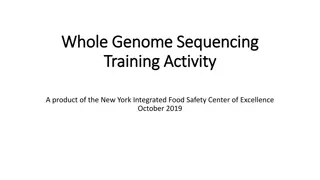Insights into Genome Assembly and Shotgun Sequencing
Explore the world of genome assembly, shotgun sequencing, and the fundamental concepts behind deriving genomes from large sets of sequencing reads. Learn about the complexity and core algorithms involved in contemporary genome assembly processes. Discover how the shotgun concept has revolutionized g
2 views • 66 slides
RLL Design and Sequencing System Overview
Common industrial sequences in RLL design and sequencing systems involve single path or multi-path approaches. Control signals can be sustain or non-sustain, impacting the system's memory. Sequence charts help visualize system operations, aiding in RLL design. Techniques like the CASCADE method are
13 views • 24 slides
Understanding Adverse Events Following Immunization (AEFI)
Adverse Events Following Immunization (AEFI) are medical incidents that occur after immunization, potentially caused by the vaccine, leading to unfavorable symptoms. Pharmacovigilance plays a crucial role in detecting, assessing, and preventing these events. AEFI can impact immunization programs at
2 views • 40 slides
NEXT GENERATION SEQUENCING MARKET
Explore $27.5 billion next generation sequencing market: Get exclusive insights on key market trends, segments, geographical analysis, & competitive analysis!\n
1 views • 5 slides
Asia-Pacific Next Generation Sequencing Market
Meticulous Research\u00ae\u2013 a leading global market research company, published a research report titled \n\"Asia-Pacific Next Generation Sequencing (NGS) Market by Offering (Kits [Library Prep, QC, DNA Extraction],\n System) Type (Genome, Exome, Targeted) Application (Reproductive, Oncology) Te
1 views • 3 slides
Next Generation Sequencing Market in Asia-Pacific Aiming for $6.38 Billion Miles
Meticulous Research\u00ae\u2013 a leading global market research company, published a research report titled\n \"Asia-Pacific Next Generation Sequencing (NGS) Market by Offering (Kits [Library Prep, QC, DNA \nExtraction], System) Type (Genome, Exome, Targeted) Application (Reproductive, Oncology) Te
0 views • 3 slides
Transformative Power of Sequencing in Molecular Biology
The falling costs of sequencing have revolutionized various fields like genetics, genomics, cell biology, microbiology, and evolutionary biology. Sequencing data has enabled us to understand genomes, revolutionize cell biology techniques, conduct comparative genomics, population genomics, and metage
1 views • 31 slides
Understanding Probability in Events
Explore concepts of probability in various events like rolling a die, compound events, simple events, and spinner probability. Learn how to calculate probabilities of different outcomes and understand the difference between single and compound events. Discover key principles in probability theory an
0 views • 13 slides
Understanding NGS and Fetal Fraction in Prenatal Screening
Next Generation Sequencing (NGS) plays a key role in prenatal testing by analyzing cell-free DNA (cfDNA) to determine fetal fraction and detect genetic anomalies like Down syndrome. The process involves DNA extraction, library construction, barcode labeling, sample pooling, quantification, and seque
0 views • 13 slides
Understanding Sanger Sequencing: A Step-by-Step Guide
Explore the detailed procedure of Sanger sequencing, from sample collection to DNA extraction, gene amplification, and sequencing preparation. Learn about the components involved, such as polymerase, nucleotides, and dideoxynucleotides, to achieve accurate DNA sequencing results. Follow the chain-te
3 views • 11 slides
Gene Expression Profiling in Statistical Genetics Summer Institute 2020
This content provides information on the Summer Institutes of Statistical Genetics module, focusing on gene expression profiling. It includes details on the schedule, experimental design, RNA sequencing workflow, modes of bulk RNA sequencing, and RNASeq software. The content discusses crucial steps
0 views • 11 slides
Understanding DNA Sequencing: Principles, Applications, and Techniques
DNA sequencing plays a vital role in various fields such as research, diagnostics, biotechnology, forensics, and biological systematics. By determining the order of nucleotide bases in a DNA molecule, it helps in understanding genetic sequences, identifying mutations, and completing projects like th
0 views • 17 slides
Strategies and Tactics in Mediation Sequencing Models
Negotiators and mediators employ various sequencing strategies and tactics to effectively manage complex social conflicts. Sequencing strategies outline the overall plan for addressing issues, while tactics consist of specific actions to achieve desired outcomes. General sequencing models include Gr
0 views • 25 slides
Patient Choice for Whole Genome Sequencing in NHS: Education & Training Slide Deck
Developed by Genomics Education Programme, these slides focus on the patient choice consent model for whole genome sequencing in NHS Genomic Medicine Service. The model aims to ensure informed choices for genomic testing, including participation in the National Genomic Research Library. It covers se
0 views • 34 slides
Guide to Participating in STAR Events in Georgia FCCLA
Discover the significance of STAR Events in Georgia FCCLA, competitive events acknowledging proficiency in various projects, leadership, and career readiness. Learn how to select individual or team events, choose a suitable project, and initiate your project effectively. Empower yourself to excel in
0 views • 19 slides
Advancements in Genome Alignment and Sequencing Techniques
Genome alignment plays a crucial role in understanding biological processes and evolutionary history. With the rise of whole genome sequencing, methods such as constrained alignment and longest increasing subsequence have been employed for accurate variant detection. Tools like BLAST, hash tables, a
0 views • 11 slides
Understanding Sequence Alignment in Next-Generation Sequencing Data
Sequence alignment plays a crucial role in analyzing Next-Generation Sequencing (NGS) data by identifying similarities between DNA, RNA, or protein sequences. Global and local alignment methods are used to arrange sequences and locate fragments derived from specific genes or transcripts. Challenges
0 views • 31 slides
Overview of RNA Sequencing Data: Insights from Transcriptomic Profiling
This data set presents key findings from RNA sequencing analysis, including distribution of mapped reads, junction identification, TPM correlation, principal component analysis, and gene expression effects. Visual representations illustrate differences in gene expression profiles across samples, emp
0 views • 6 slides
RMS PTO Board Meeting Update and Event Schedule
The recent RMS PTO board meeting covered various topics such as budget tracking, upcoming events, and recent activities. Discussions included PayPal usage, budget allocations for future fundraisers, expenses, and a review of recent events. The meeting also outlined an array of events planned for the
0 views • 7 slides
Genetics Subcommittee Report on MESA, ESP, and Return of Results
This report discusses the collaboration between MESA, ESP, and various consortia in sequencing exomes and analyzing variants in coding regions of genes. It highlights the impact of exome sequencing on scientific and personal levels, focusing on rare variants and potential clinical implications. The
0 views • 12 slides
Understanding the Importance of Trimming in Sequencing Data Processing
Trimming is a crucial procedure used to process raw sequencing data by removing errors such as low-quality bases and ambiguous nucleotides. This step is essential before downstream data analysis to ensure accurate results. Trimming involves setting quality thresholds to retain only high-confidence b
0 views • 10 slides
Understanding Probability of Compound Events
Compound events involve multiple outcomes occurring together, such as independent events where one outcome does not affect another, and dependent events where one outcome affects the other. Complement sets, card probabilities, and mutually exclusive events are also discussed, providing a comprehensi
0 views • 15 slides
Understanding Sanger DNA Sequencing Procedure
Overview of Sanger (dideoxy) DNA sequencing, involving deoxynucleotides and dye-labeled dideoxynucleotides to image DNA band sizes. The simulation model includes steps like denaturing DNA, annealing primers, and synthesizing DNA chains using dNTPs and ddNTPs. The process culminates in electrophoresi
0 views • 7 slides
Genomics Facilitator's Toolkit Summary & Sample Requirements
This toolkit provides essential resources for healthcare professionals involved in genomics services, covering topics such as genomic medicine, whole genome sequencing, clinical genetic testing methods, interpretation of DNA variants, and more. It also details the specific sample requirements for di
0 views • 24 slides
Next-Generation Sequencing in Clinical Practice: Advancements and Applications
Next-Generation Sequencing (NGS) has revolutionized genetic analysis in healthcare. Dr. Alexandros Spyridonidis, a renowned expert in the field, discusses the impact of NGS on diagnostics, prognostics, and personalized medicine. The technology allows for more comprehensive understanding of diseases
0 views • 38 slides
Next Generation Sequencing Informatics
Explore $4.3 billion Next Generation Sequencing (NGS) Informatics Get exclusive insights
1 views • 4 slides
Evaluation of PacBio Sequencing to Improve Sunflower Genome Assembly
Presentation at the Sunflower Genome Consortium Meeting in San Diego discussed the use of PacBio sequencing to enhance the sunflower genome assembly, with evaluations on PacBio data's effectiveness at locus and genome scales. Results highlighted challenges and successes in improving assembly quality
0 views • 15 slides
Block Jam: A Tangible Interface for Interactive Music
Block Jam, designed by Sony CSL in the early 2000s, is a tangible interface for sequencing music using functional units called Blocks. Users manipulate music through Blocks that connect to sequencing software, enabling easy music creation and encouraging cooperative musical experiences. User studies
0 views • 8 slides
Comparison of Economic Reform Sequencing in China
Andrew K. Rose from NUS Business School compares China's economic reform sequencing with the Washington Consensus. The optimal reform sequencing includes stabilization before reform, real before financial reform, and domestic before international reform. China's approach aligns oddly with the Washin
0 views • 14 slides
Understanding Sequencing Algorithms for Biological Sequences
Karla H. Hermann discusses specific algorithms for sequencing biological sequences, emphasizing the importance of clear experimental questions, good planning, and careful sample handling. Techniques such as RNA sequencing with gel beads and 10x Genomics software are highlighted. The process of picki
0 views • 15 slides
Noise Control Measures and Community Preferences at the Corn Exchange
Various images and references discuss the history of amplified music events at the Corn Exchange, noise complaints leading to control methods by the FTC, impacts on events and community preferences post-control, and survey findings on participant demographics, noise effects, and desired public event
0 views • 19 slides
Bulk RNA-seq Analysis: Basics and Downstream Insights
Bulk RNA-seq is a powerful method for analyzing gene expression in biological samples. This approach involves extracting and sequencing RNA to understand the presence and quantity of RNA molecules. The process includes steps like conversion to cDNA, sequencing reads, and downstream analysis over ann
1 views • 12 slides
Integrative Inference of Tumor Evolution from Single-Cell and Bulk Sequencing Data
Cancer's complex evolution introduces challenges in treatment response. B-SCITE aims to enhance tumor phylogeny inference by integrating bulk sequencing and single-cell data using a probabilistic approach. It addresses the complexity of tumor cell populations and potential treatment failure causes.
0 views • 20 slides
Educational Activities Using Matching Frames for Learning and Development
Engage in shape matching, color matching, number sequencing, and pattern sequencing activities using specially designed frames on the All-in-One Board. Enhance cognitive skills, sensory perception, and fine motor skills through these interactive exercises.
0 views • 23 slides
Understanding NGS Applications in Bioinformatics
Explore the world of Next-Generation Sequencing (NGS) applications in bioinformatics, covering topics such as RNA sequencing, big data challenges, storing genomic datasets, querying genetic information, and data visualization. Dive into the complexities of sequencing technologies, gene expression co
0 views • 41 slides
Next generation sequencing informatics (2)
Explore $4.3 billion Next Generation Sequencing (NGS) Informatics
1 views • 4 slides
Brain Oxygen Optimization in Severe TBI: Adverse Events Analysis
This study led by Dr. Robert Silbergleit focuses on adverse events in brain oxygen optimization for severe Traumatic Brain Injury (TBI) patients. It outlines key points for reporting adverse events, discusses relatedness algorithms, and presents scenarios to analyze adverse events occurrence post-en
0 views • 24 slides
Understanding Whole Genome Sequencing in Public Health Training
This training activity conducted by the New York Integrated Food Safety Center of Excellence in October 2019 focuses on educating public health staff/students on the application of Whole Genome Sequencing (WGS) and whole genome multi-locus sequence typing (wgMLST) for subtyping. Through a mock case
0 views • 12 slides
Understanding Nucleic Acids: DNA and RNA Overview
Nucleic acids, including DNA and RNA, are essential molecules storing genetic information for cellular functions. Comprised of nucleotides with nitrogenous bases, sugars, and phosphate groups, they play crucial roles in intracellular signaling, energy transfer, and genetic makeup determination. Ribo
0 views • 26 slides
University of Wisconsin Biotechnology Center Overview
The University of Wisconsin Biotechnology Center (UWBC) is a leading institution employing approximately 60 faculty, staff, and students. Offering core facilities such as the Bioinformatics Resource Center and DNA Sequencing Core, UWBC provides services in next-gen sequencing data analysis, genome a
0 views • 12 slides
